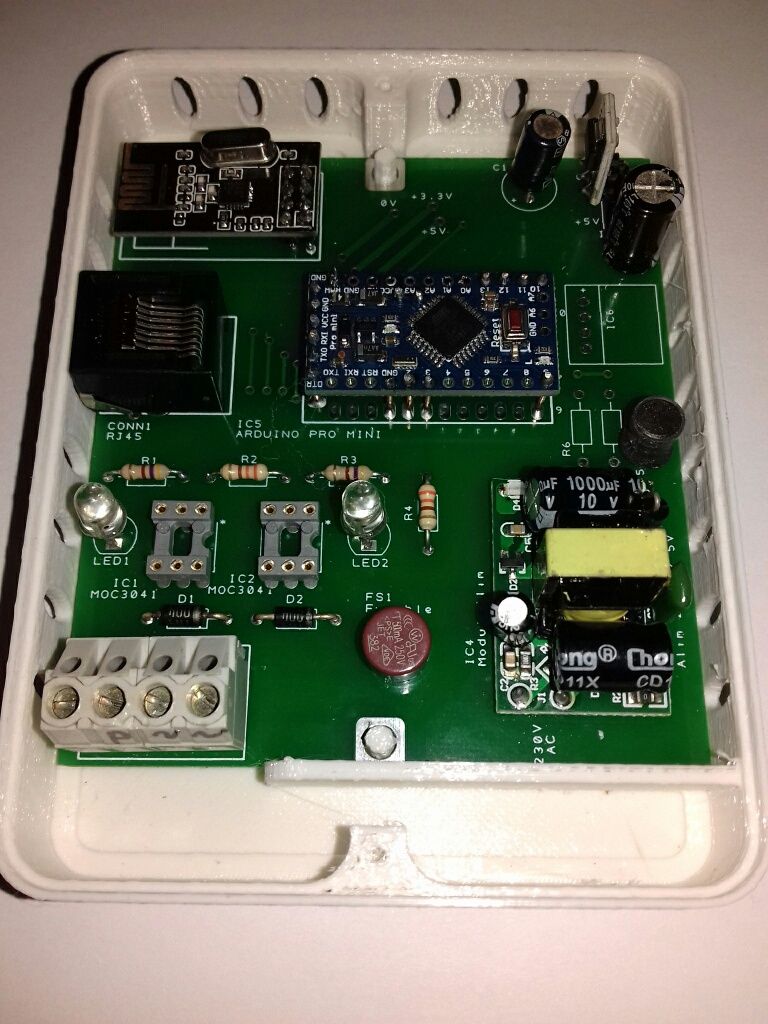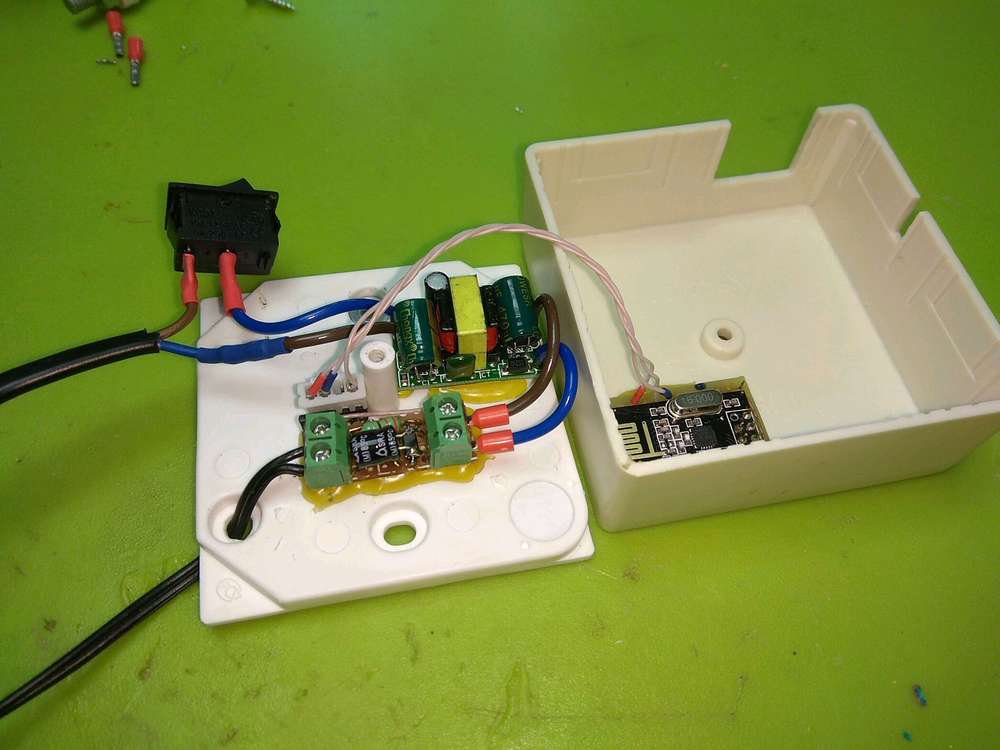Supply 230V/5V for node ? Mini Pro, NRF24L01, ams1117
-
Hello,
A problem on which I dry.

I mounted a node to control my radiators in 4-order pilot wire, Arduino MiniPro + radio NRF24L01, connected to a usb - raspberry gateway (domoticz 2020.1). The gateway works well for other nodes.
The node-gateway-domoticz link works very well when the node is powered by usb from a usb of the PC or even from a battery (power bank).
the domoticz log goes back to the node identification at init:The same node does not send any information to the gateway when I connect it to an onboard! 230V / 5V power supply
I tested with or without the 10µ 47µ condo on the 3.3V power supply built by an AM1114 regulator from 5V. Nothing to do.By acquiescence, I reassembled the same assembly on an Arduino UNO board, and the problem is exactly the same.
I therefore exclude a software problem, it is rather related to the hard, to the masses?
Who has ever mounted an NRF on a mains powered assembly?
It's a shame because I have 230V behind each radiator, and my 8 boxes are ready to send the signal on the pilot wires.
I therefore take any lead because I am at a dead end ... Thank you for your insight!
@Jmarcusse
ON my side i do use many modules over 230 AC power without difficulties, but i'm always using Hi-Link modules for either 5v or 3.3v. I'm using different Arduino flavors (SAMD, NRF52, ...) no issues -
@Jmarcusse
ON my side i do use many modules over 230 AC power without difficulties, but i'm always using Hi-Link modules for either 5v or 3.3v. I'm using different Arduino flavors (SAMD, NRF52, ...) no issues -
I am using the same power supply in one of my device (dimmer for aqua LED lamp)- it work good..

-
@cabat OMG - what is the colour coding in your country for live and neutral?
I'd love to know why blue turning into brown is acceptable practice :)
-
@cabat OMG - what is the colour coding in your country for live and neutral?
I'd love to know why blue turning into brown is acceptable practice :)
-
@evb An air gap can be a slot cut out of the pcb around the live/neutral/earth and also between the high voltage side and the low voltage side. It helps reduce 'flash over' in the event of a surge, nearby lightning strike or even humid conditions.
I have a collection of power supplies from China that I simply won't use due to safety concerns.
I even once bought some 'finished' (in a sealed case) 12v power supplies. I ordered 4 of them. All had the same markings, same case, same CE logo.
Opening them up I find 3 different boards that had been chopped out of other equipment (with the original 240V input wires twisted and simply cut off and left flaping around in the breeze. I had to do some work on them before I'd even plug them in!!!
Also, be warned that there are plenty of fake/counterfeit power supplies out there.
-
Sorry for late reply I was away for Chtistmas.
Good to see you use good practice. Trouble is that there are many that don't and the fakers are only after moeny and don't care about you or your property.
Yes there are fake Hi-link modules being sold. Name is no guarantee as Meanwell have also been faked. In your case you would have to destroy one to see if it were genuine. Ali is notorious for scammers to sell fake goods. But ebay, banggood and Amazon are not free of this type of thing...
Yout best bet is to pay extra and get from a repuatble electronics supplier, yes it's more money, but you will sleep knowing you have genuine safe powersupplies in your home.
-
Sorry for late reply I was away for Chtistmas.
Good to see you use good practice. Trouble is that there are many that don't and the fakers are only after moeny and don't care about you or your property.
Yes there are fake Hi-link modules being sold. Name is no guarantee as Meanwell have also been faked. In your case you would have to destroy one to see if it were genuine. Ali is notorious for scammers to sell fake goods. But ebay, banggood and Amazon are not free of this type of thing...
Yout best bet is to pay extra and get from a repuatble electronics supplier, yes it's more money, but you will sleep knowing you have genuine safe powersupplies in your home.
@skywatch Good advise, I was also on the price. There is some time huge price difference in Europ between regular suppliers en Chiness market, especially when you order low quantities, items are expensive and you do incure transportation cots in addition ... So for the time being I do limit that to the things I can't find on chines market !
But your call is also important, as ensuring safety !
-
@skywatch Good advise, I was also on the price. There is some time huge price difference in Europ between regular suppliers en Chiness market, especially when you order low quantities, items are expensive and you do incure transportation cots in addition ... So for the time being I do limit that to the things I can't find on chines market !
But your call is also important, as ensuring safety !
@Didou I know that cheap price is attractive, but in the long run it may not be the wisest path to take, especially with things connected to high voltages.
When I mentioned the 4 'fake' power supplies back up this thread the thing that alerted me to be concerned was the fact that the power cables sent with them broke THREE electrical safety regulations in the UK. People are importing dangerous items and using them unawares. Its frightning really as there was even a case of a child being killed by a fake games console bad power supply. The risks are real.
If you understand spoken English there is a TV program called 'Fake Britain' which i believe is on the web too. It follows investigations into all sorts of fake and dangerous items that get into the country. It's a very enlightening watch.
